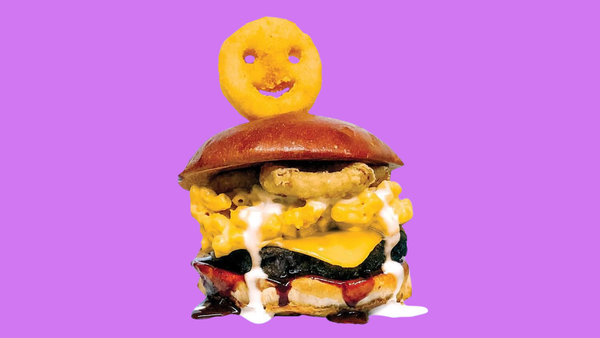Let's judge some books by their covers
Thomas Baldwin joins Night Water to dream up some summaries of books based solely on the information on their covers

Has this ever happened to you? You find yourself in a bookstore, surrounded by attractive covers and fascinating premises. Even though you know you have an overflowing bookshelf at home, the contents of which remain mostly unread, you end up walking out with a bag full of brand new books that will also, unfortunately, go unread. They say never judge a book by its cover, but it can be hard not to feel the compulsion to purchase a tome based solely on its attractive outer wrapping.
My friend Thomas Baldwin—who you might remember from the 2021 Finn and Rey Cat Report Card—has decided to tackle this issue head-on, and has worked tirelessly to resist the urge to purchase any new books until he reads every single unread publication on his shelves.
This gave me a fun idea for a challenge: I would tempt my friend with an array of covers, all from books he had never read. Thomas would be forced to consider each cover carefully, and then diligently write up a summary of what he believed the book was about based solely on the information available to him visually. From there, I would apply a highly scientific formula to judge just how accurate his assumptions were.
Fortunately for all Night Water readers out there, Thomas has decided to face temptation and this challenge with aplomb. Below, you’ll find seven book covers, seven imagined summaries, and seven accuracy ratings.
Disclosure: When possible, I used Bookshop.org affiliate links below. If you purchase one of these books using an affiliate link, I may receive a small commission at no cost to you. If you wish to purchase one of these books but not support Night Water, head to your local bookstore and support them instead!
The Three-Body Problem
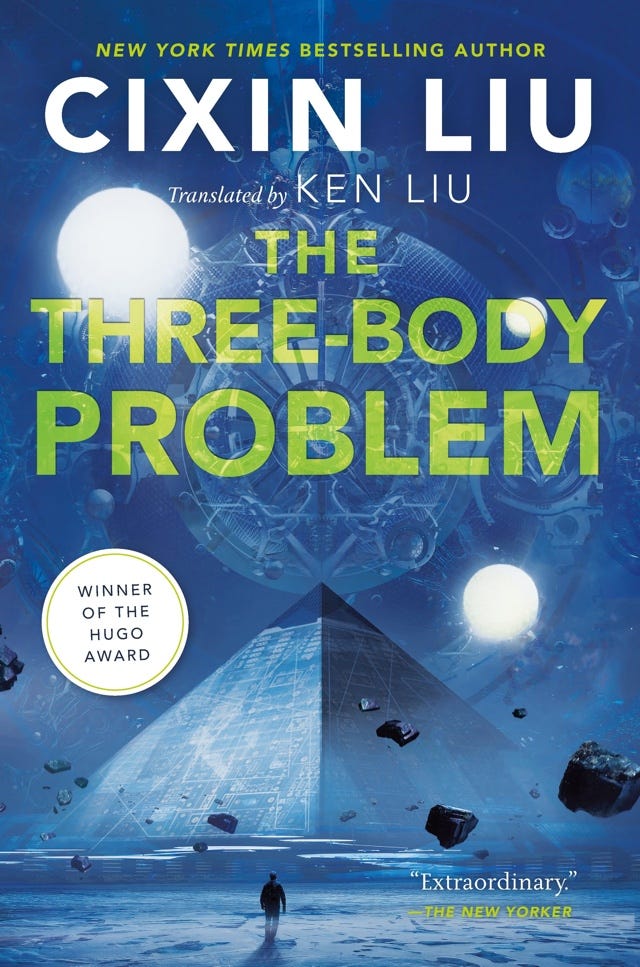
Thomas: “This nonfiction book is a lot like The Secret. The people that you found the most annoying in college swear up and down that this book changed their lives and they won’t stop talking about it. In this book, Liu explains that Descartes only had it partially right when he theorized dualism. Liu explains that in the future each person has a discrete body in the physical world, a soul in the spiritual world, and a third cyber avatar that is comprised of your presence on social media. This avatar will continue to live after you die in a huge cyber computer where your avatar can watch ads to earn ethercoins in order to change your appearance into cool things like Robin Williams’ scientist character in Flubber. This is the future I’m looking forward to living in.”
Accuracy Rating: 0.5/3 body problems. The first part of Liu’s Remembrance of Earth’s Past trilogy, The Three-Body Problem is a science-fiction mystery novel about Earth’s first contact with an alien race, the alien plan to invade, and the camps on Earth that form to either welcome or resist the invasion. There are cyber avatars, but no ethercoins.
McGlue
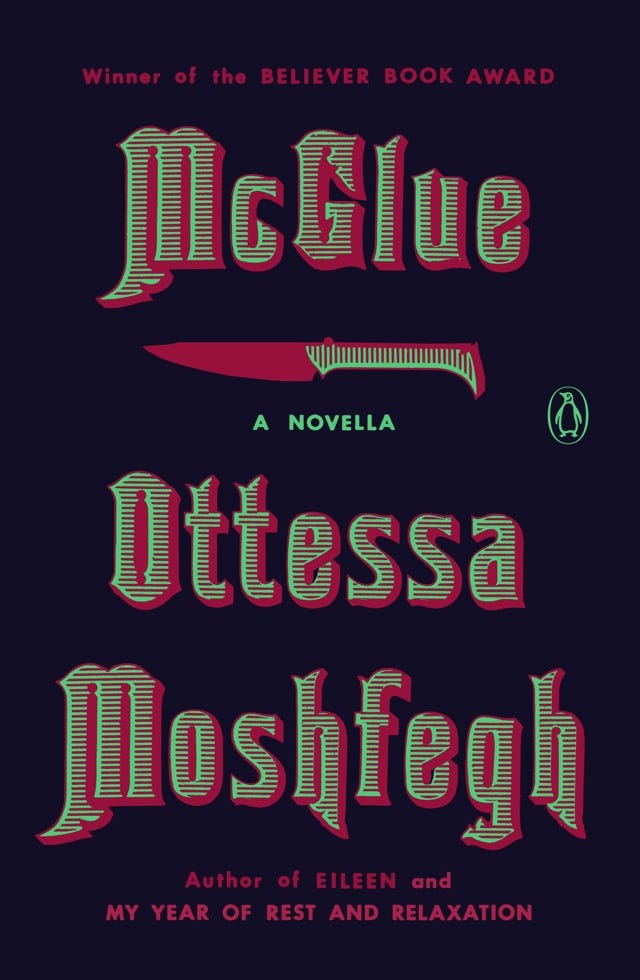
Thomas: “This book is actually a prequel to the Knives Out films. The detective with the southern drawl is just some nobody in St. Louis. Usually he’s just being paid by wealthy wives to tail their husbands to confirm that they are sleeping with their secretaries. It probably would’ve been simpler for the wives to just ask anyone at their husbands’ places of work, because everyone knows. On one of these routine tailing jobs, the detective discovers that the owner of a glue factory is using the factory to dispose of bodies. Now he has to figure out where the bodies are coming from. What a sticky situation!”
Accuracy Rating: 0.2/1 last drinks. There is a murder in Ottessa Moshfegh’s debut novella, likely committed by the titular sailor, though there is no connection to Rian Johnson’s trilogy or Daniel Craig.
The Amazing Adventures of Kavalier and Clay
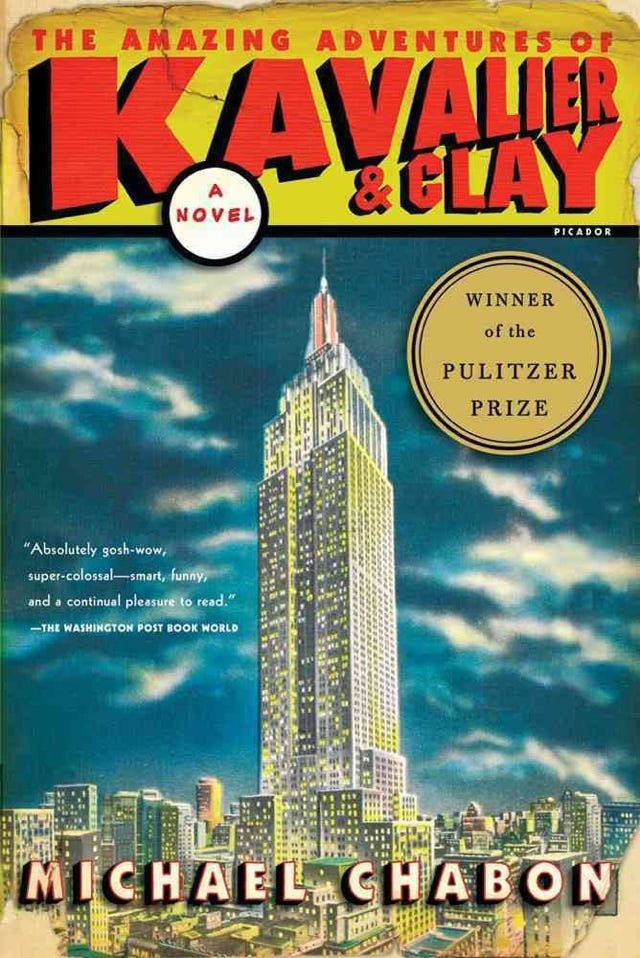
Thomas: “This novel follows two sideshow performers. Their act is a mix of comedy and a tightrope act. Kavalier crosses a tightrope blind while Clay tells jokes to Kavalier. Because of the noise of the crowd and the height of the tightrope, Kavalier usually doesn’t hear the jokes and just says ‘What? What? I can’t hear you’ over and over again. Circus fans loved it. These two become so popular that they go on tour all on their own, and eventually move to New York City where they fall in love with and marry two twin sisters that they meet in line at Katz’s Deli. Clay begins cheating on his wife with her sister and she gives birth to a son, named Empire. Kavalier goes the rest of his life not knowing that Empire is not his biological son but loves him dearly. Kavalier is on his deathbed at age 90 when Clay finally confesses to siring Empire. Kavalier’s hearing aids had died earlier that day and he never heard Clay’s confession before passing away.”
Accuracy Rating: 35/80 pulse-pounding pages. Vaudeville and sideshows and magicians litter Chabon’s magnum opus, all inspiring Kavalier and Clay to create the Escapist, an anti-Nazi comic book character. I hope it doesn’t give too much away to say there is a son and an issue of paternity, as well as an Empire, but no twin sisters or hearing issues.
Uncanny Valley

Thomas: “Wiener’s memoir concerns her recent experiences while online dating. She connected her dating profiles to a chatbot that would swipe right on every profile, and then when a person matched it would just repeat whatever phrase was sent to it in the DMs. A depressingly large number of men thought this was flirtatious and did not realize they were being messed with.”
Accuracy Rating: 500K/7.5B in acquisition cost. Weiner’s Uncanny Valley, a thinly-veiled coming-of-age memoir about her career in the tech industry, is concerned about the ethics of technology as well as the particular horrors of men, but not quite in the combination Thomas imagines.
Louis Riel
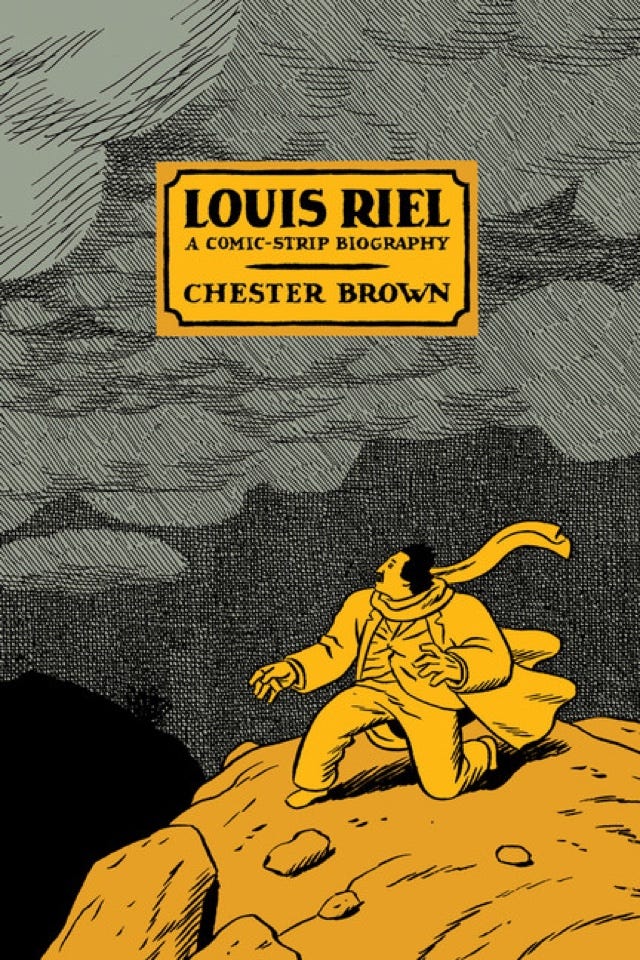
Thomas: “Louis thinks of himself as a serious artist growing up. He reads Rilke and Nietzsche and imagines himself as a modern-day Renaissance man. After his relationship with his wife falls apart, he decides to leave his office job and finally devote himself to his poetry. He finds it much harder and lonelier than he anticipated, and suspects that he relied on others more than he cares to admit.”
Accuracy Rating: 3/16 years fighting Canada. Chester Brown certainly thinks of himself as a serious artist and scholar, filling almost thirty pages of his cartoon biography of Louis Riel with end notes and explanations of why he made certain decisions in his retelling of Riel’s struggle against the Canadian government. While Riel did not quite see himself as a Renaissance man, towards the end of his life he did believe he was named by God as David, Prophet of the New World.
The Journalist and the Murderer
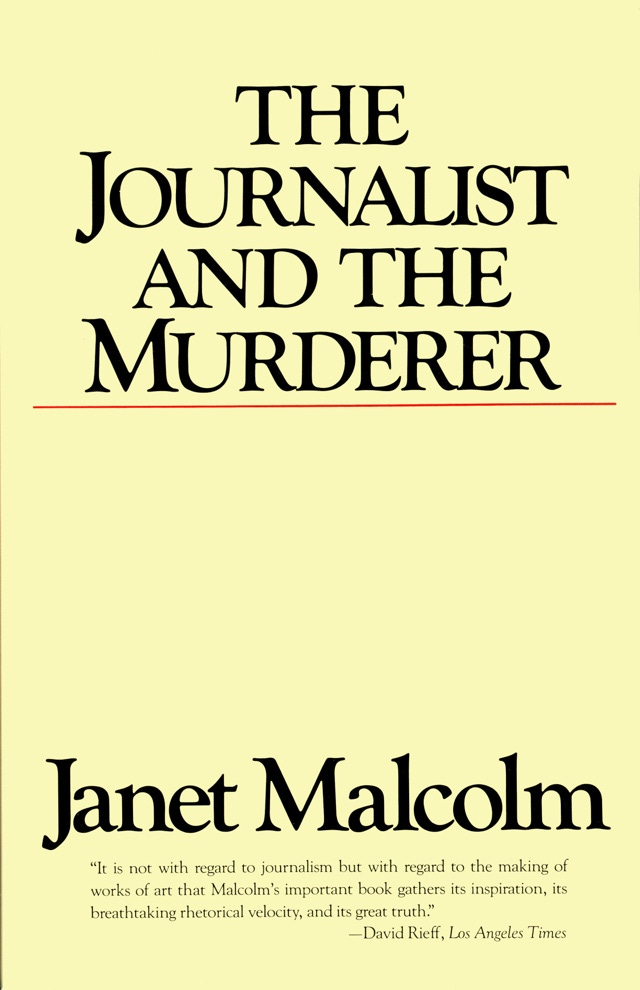
Thomas: “Fred, recently let go from his job at the New York Herald Tribune, has a lot of time on his hands. He spends it mostly smoking in his apartment and applying to jobs he sees in the newspaper. He starts to notice strange things happening at the apartment of his neighbor, Howie. He’s gone missing, and a strange man with his own key frequently enters and leaves the apartment, sometimes with large suitcases. Fred is on the case. He interviews his neighbors whose answers and increasing hostility indicate to Fred that more is going on here than just a missing person. The twist: Fred is not a journalist, he worked at the Herald Tribune as an accountant and was fired for a psychotic break at the office. Howie has gone on an extended vacation and lets his brother-in-law stay at his apartment while he tries to get a foothold in the New York market as a door-to-door salesman of power tools.”
Accuracy Rating: 0.25/2 parts serialized in The New Yorker. Janet Malcolm’s study on the ethics of journalism focuses on a real-life murder case, the writer he trusted to put a positive spin on his story, and the lawsuit that arose when he didn’t. The writer, Joe McGinniss, was not an accountant, however, nor did he have a psychological break.
Living Inside By Own Butt For Eight Years, Starting A Business And Turning A Profit Through Common Sense Reinvestment And Strategic Targeted Marketing

Thomas: “This is a fairly standard textbook examining the current strategies to generate passive income through property investment. The book is in the course curriculum for the Schach Institute of Real Estate at NYU’s School of Professional Studies and is one of Ben Carson’s favorite reads of 2022 so far.”
Accuracy Rating: 6/8 years living inside my own butt. Ben Carson has not yet released his list of favorite reads this year, but otherwise, spot on. Find this textbook on Amazon or listen to performer James Urbaniak reading this classic tale on Pounded In The Butt By My Own Podcast.
What covers will you judge?
How do you think Thomas did? If you want to join in on the fun, choose one of these seven volumes or another title you’ve never read and comment below with your own dreamt-up summary.



